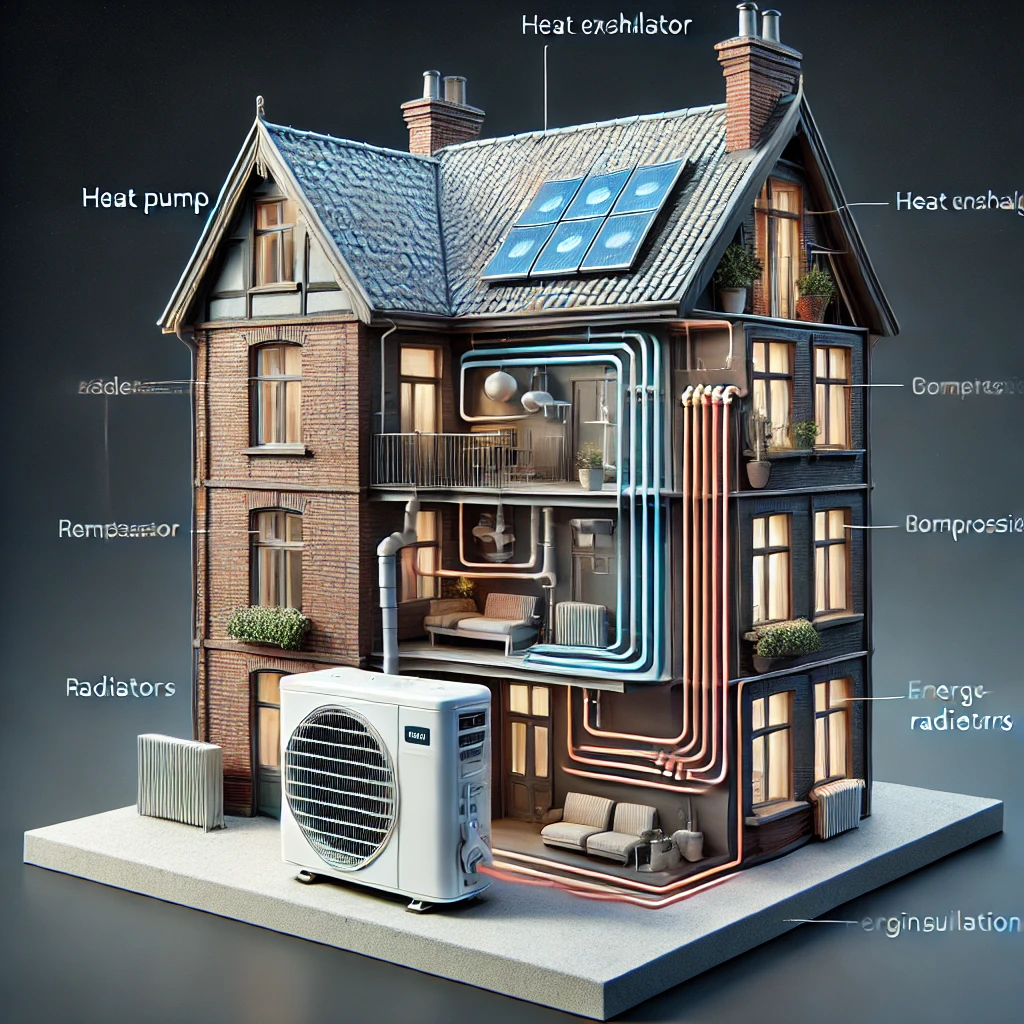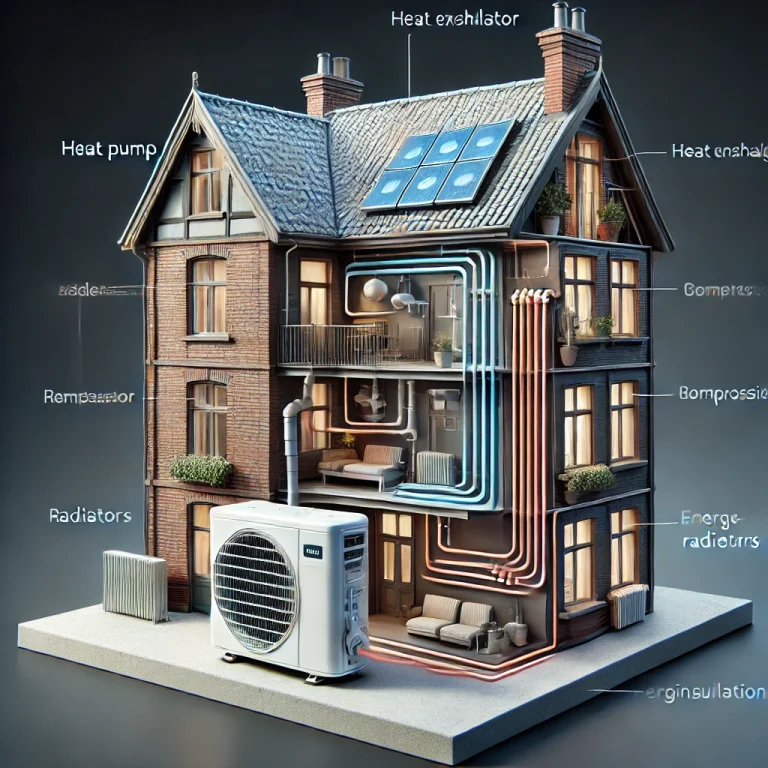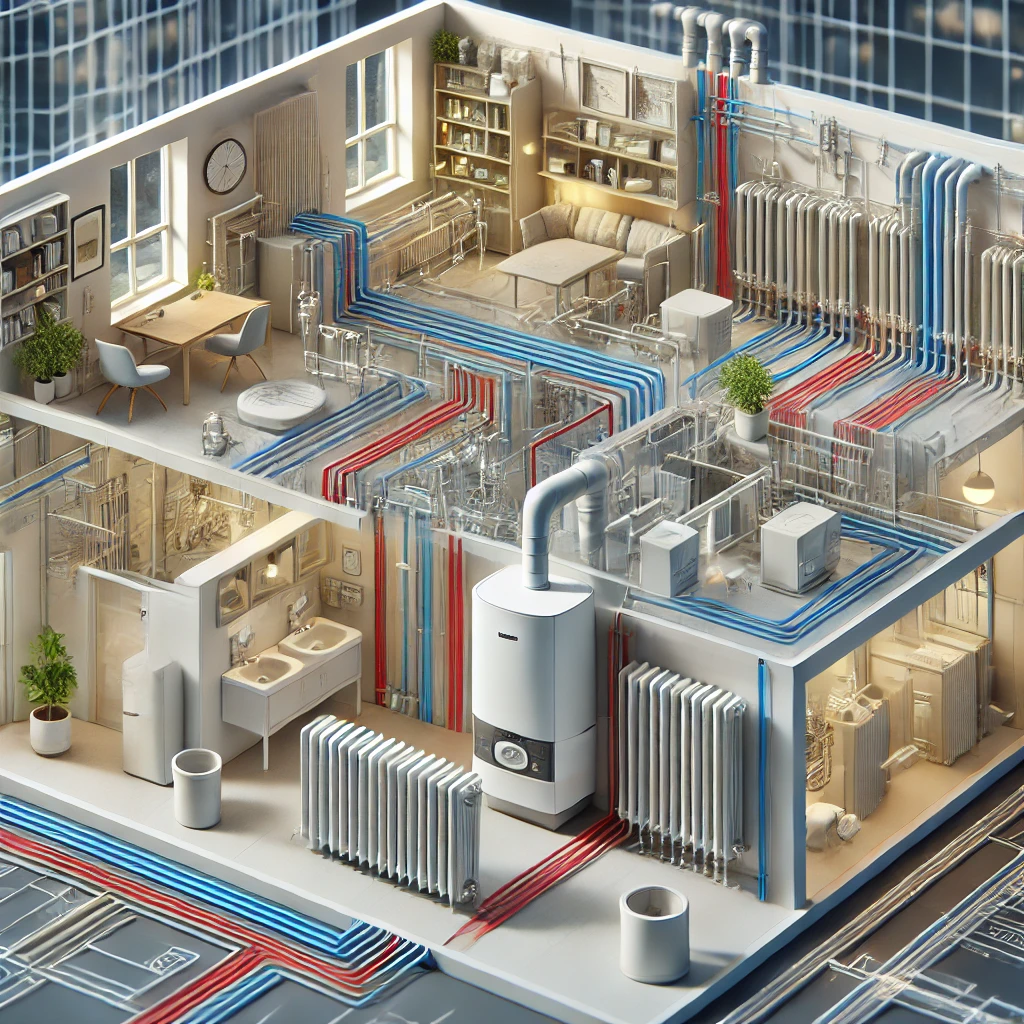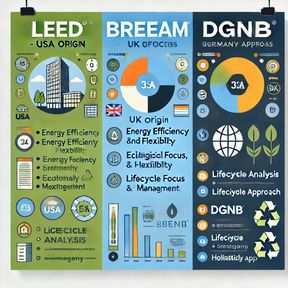🔥 Hydraulic Balancing: Optimizing Heating Systems for Maximum Efficiency & Comfort

🏢 AxonCad – Your Expert in Heating Optimization
At AxonCad, we specialize in hydraulic balancing for residential buildings, apartment complexes, office spaces, hospitals, and renovation projects. By optimizing your heating system, we ensure optimal energy efficiency, comfort, and cost savings.
❄️ What is Hydraulic Balancing?
Hydraulic balancing is a crucial process that optimizes the distribution of heating water within a building. Whether using radiators or underfloor heating, this method ensures that the correct amount of heating water flows at the optimal rate in each circuit.
Without hydraulic balancing, uneven heat distribution can occur, leading to inefficient heating, higher energy costs, and reduced comfort.
⚙️ Why is Hydraulic Balancing Necessary?
A heating system naturally experiences resistance variations in pipes and radiators. Without proper balancing:
❌ Some radiators remain cold, while others become too hot.
❌ Energy consumption increases unnecessarily.
❌ The heating system wears out faster.
Hydraulic balancing eliminates these issues, ensuring uniform heat distribution and optimal system performance.
🛠️ How Does Hydraulic Balancing Work?
The process involves several key steps:
1️⃣ Heat Load Calculation – The required heating output for each room is determined.
2️⃣ Flow Rate Optimization – Pipe lengths, diameters, and radiator sizes are analyzed to calculate the necessary flow rate.
3️⃣ System Adjustments – Radiator valves and distribution systems are adjusted to ensure proper water circulation.
✅ Key Benefits of Hydraulic Balancing
🔄 1. Even Heat Distribution
➡️ Every room receives the exact heat it needs.
➡️ No hot or cold spots, leading to greater indoor comfort.
💰 2. Energy & Cost Savings
➡️ A well-balanced system consumes less energy, reducing heating bills.
➡️ CO₂ emissions decrease, supporting sustainability.
🏗️ 3. Extended System Lifespan
➡️ Overheating & uneven pressure are prevented.
➡️ Less wear & tear reduces maintenance costs.
🔧 4. Retrofitting for Existing Buildings
➡️ Hydraulic balancing can be performed both during installation and as a retrofit for older heating systems.
🔍 Why Choose Professional Hydraulic Balancing?
Although some DIY balancing techniques exist, a precise and effective hydraulic balancing requires:
✅ Specialized knowledge of heating system design.
✅ Advanced measuring equipment to fine-tune water flow.
✅ Professional expertise to maximize energy efficiency.
At AxonCad, our experienced engineers provide precise and effective hydraulic balancing services, ensuring:
✔️ Optimized heating performance
✔️ Lower operational costs
✔️ Sustainable & eco-friendly solutions
📢 Upgrade Your Heating System with AxonCad!
Investing in hydraulic balancing means:
✅ Better heating performance
✅ Lower energy bills
✅ Sustainable operation
📩 Contact AxonCad today for a consultation on how to make your heating system smarter, greener, and more efficient!
🔗 www.axoncad.com | info@axoncad.de
Keywords
✔ Hydraulic balancing in heating systems
✔ Energy-efficient heating optimization
✔ How to improve heating performance
✔ Reducing heating costs with hydraulic balancing
✔ Sustainable building heating solutions
✔ Heating system maintenance and efficiency
✔ Radiator balancing for energy savings
✔ Professional heating system optimization







